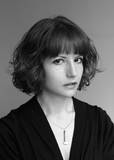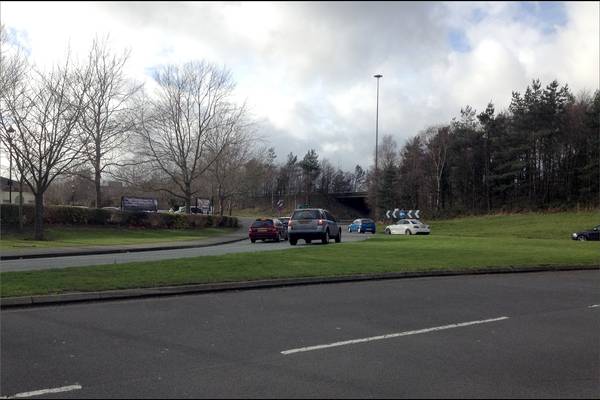
I knew what I was going to have to do, and I knew it wasn’t going to be easy. What was impossible to predict, though, was exactly how difficult it was going to be. There was no way of knowing until I got there, so there was nothing for it, really, but to press on. And even if it proved to be really bad, I knew, from past experience, that I’d do it anyway.
I had set out to walk from Hawarden to the ruins of Ewloe Castle and have a look around Wepre Park, the steep, wooded gully at whose edge it stands. My writing is very much rooted in place and the natural world, so it was important for me, while working at Gladstone’s Library, to feel that I had a good sense of the surrounding landscape – and there’s no better way to do that than on foot and with an Ordnance Survey map under your arm.
It wasn’t the walk that worried me; it’s only about three and a half kilometres each way. It was the big road junction with the A494. It looked pretty hairy on the map, and while I could see there were a couple of footpaths that might take me around it, they’d add quite a bit to the journey – and I did want to be back at the Library for lunch. But although the weather that day was dry, the preceding months of rain had left the fields waterlogged, so after two failed attempts to head cross-country I realised there was nothing for it. I’d brave the big road junction, and just hope that it had pavements, at least.
Last year I walked part of Watling Street (now the A5) north out of London towards Milton Keynes as research for a book. I walked for four days, alone, spending the nights at B&Bs and inns. I like walking; with my OS map I didn’t worry that I would get lost, and I neither did I feel any more vulnerable to attack than in my everyday life (ie. at considerably less risk than a man). What I did find stressful, though, was the constant sense of being in the wrong place. There I was, a lone woman, on a weekday, walking along a busy road with no pavement, in a not-particularly-scenic part of the countryside. Everyone else was driving the school run, or commuting, or doing their jobs. I didn’t fit.
Tramping around with a backpack and hiking boots in the Lake District or Dartmoor is perfectly acceptable; in Harpenden and Radlett and the hinterland north of London I could not fail to be aware how much I stood out: not just in the daytime, but eating out alone each night too. It felt strange, and wearing. At times I longed to be back in my everyday life where I could swim with, not against, the flow: where in the morning I join a commuter crowd heading into the centre of London, and in the evening am part of the same crowd coming home; where my movements are explicable, where I fit in, and I can be invisible. I learned, on that trip, that doing things differently – being disruptive – is hard.
That feeling of being somewhere I shouldn’t came back to me at the Ewloe roundabout. Fortunately there were pavements, though they were little used; I could see that under the big flyover there wasn’t even much graffiti – never a good sign. But pedestrians were permitted, unlike on motorways, so it was just a matter of crossing each of the four turnoffs one by one. But I knew the cars wouldn’t be expecting to see someone on foot; they were no doubt just swinging around the roundabout, as they did every day, and accelerating into their exits. The traffic noise was loud and constant, so my ears weren’t much guide; I simply had to trust my instincts, breathe, and nip across each exit until I regained the Ewloe road on the other side.
It was absolutely fine, of course. But it got me thinking again about how difficult it can feel to put yourself somewhere unusual, to go against collective wisdom and behaviour, and to know that you stand out. Difficult – but also necessary if we are to discover and come into relationship with our true selves. In Being And Time Heidegger talks about ‘the they’ (‘das man’): those shadowy, amorphous others whose authority we sense even as we struggle to see from whence it comes. Their diktats are often imbibed so early as to become invisible to us, governing all the more powerfully our behaviour and our choices: One does not strike up a conversation with strangers on the London tube. One does not tell a friend that their behaviour has angered or frightened one. One does not say out loud that one sometimes hates or is bored by one’s children. One does not explore the toys, clothes or traditional pursuits of the opposite gender. One does not walk the A5 for four days, alone.
But what if those are the very things we find ourselves wanting – needing – to do? What sanctions, really, can das man impose?
Returning from my Watling Street adventure brimming with material for my second book – material I never could have gathered had I travelled by car – I realised that the stress of going against convention for those four days had been entirely self-generated: nobody had actually objected to me walking where I did, or said anything that made me feel out of place – and if they had, it wouldn’t have harmed me anyway. No, the discomfort I had felt was purely internal, and, as such, a chimera: the imagined, deeply internalised reaction of das man, and nothing more. I realised then that I was free to make different choices than those around me, when living authentically required it.
It’s a vital discovery for those of us whose lives do not, for whatever reason, follow the conventional path – and while I wish I had made it earlier, I’m mostly thankful that I made it at all, because the strange, uncertain existence of a writer would be harder to endure without it.
I thought about the subject again at Gladstone’s Library’s ‘Hearth’ weekend, when I met a young woman who had attended my session on finding inspiration. We spoke afterwards, and it was clear she was at a junction in her life, moving from safe but conventional structures to a new set of choices. She was nervous but exhilarated, and – what struck me most – faintly incredulous at her previous life: shocked by how she had, for so long, been blind to her real needs, her true nature.
And yet it’s so easy – for all of us, but perhaps more particularly women – to feel that we must fit in. We all long to be liked, and, worse, we long to be ‘normal’; in trying to fit in we can struggle to hear ourselves clearly enough to identify our real needs, and may fail, as I once did, to consider the range of opportunities open to us – writing off some of those choices because they are for the ‘odd’, the ‘arty-farty types’, the ‘hippies’ or any other of the myriad terms by which we characterise those who go against convention. But when we do that we align ourselves, safely and comfortably, with Heidegger’s das man: not only limiting ourselves, but imposing the same implicit limits on those around us.
Both religion and art have the power to disrupt (and to maintain) the norms imposed by das man – and the points at which they intersect with those norms can give rise to a fruitful, and powerful, friction. In some ways, what I feel going all around me at Gladstone’s Library is that friction: while on the surface a place of calm and courtesy and community, it is also somewhere that goes rebelliously against the grain: where beliefs can be challenged and unanswerable questions asked; where free thinking and the exchange of ideas are made welcome; where guests, visitors and even writers-in-residence can step outside their lives for an hour, a weekend or a month, and ask themselves what their own values are, and how they really want to be in the world.
